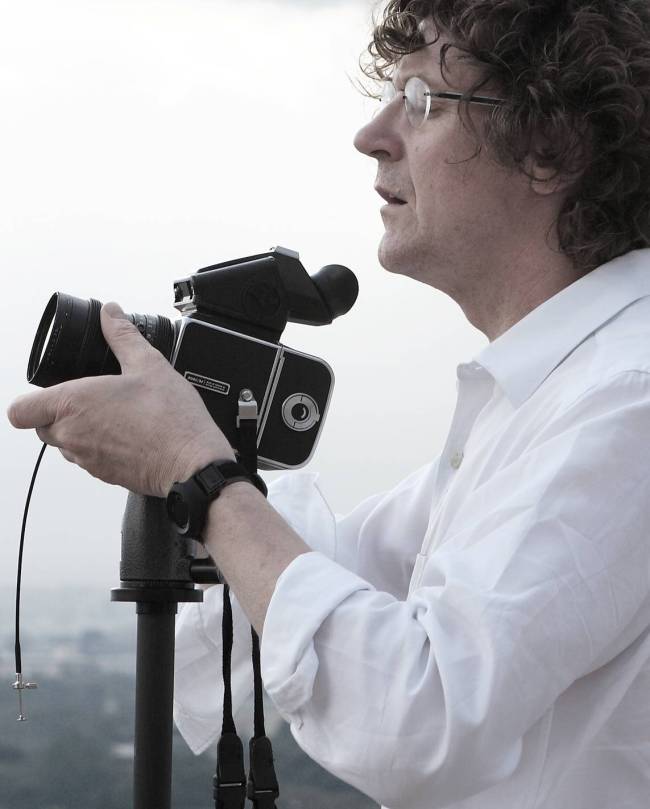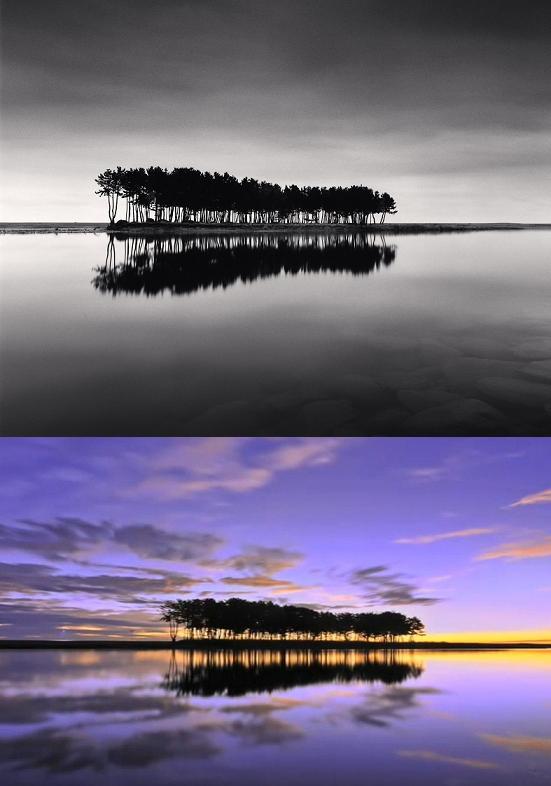‘Pine Trees’ bring attention to tricky issue of photograph copyright
British-American photographer Michael Kenna appears at Seoul court to defend the rights to his work
By Lee Woo-youngPublished : Jan. 15, 2014 - 19:30

Internationally acclaimed British-American photographer Michael Kenna appeared in a Korean court Wednesday afternoon.
He was there to testify as a witness in the copyright lawsuit filed by his Korean agent Gallery Kong against Korean Air, which used “almost the same” image as his for a TV commercial in 2011.
He called Korean Air’s use of the image “bad behavior.”
Kenna said he believes Korean Air was aware of his picture, “Pine Trees,” when it used a similar photograph taken at the same location and featuring an identical composition.
He was there to testify as a witness in the copyright lawsuit filed by his Korean agent Gallery Kong against Korean Air, which used “almost the same” image as his for a TV commercial in 2011.
He called Korean Air’s use of the image “bad behavior.”
Kenna said he believes Korean Air was aware of his picture, “Pine Trees,” when it used a similar photograph taken at the same location and featuring an identical composition.

“As a professional photographer, I feel disappointed,” he said at the Seoul Central District Court.
“It’s demeaning to defend my rights for my photographs here.”
Kenna gained kudos in Korea for “Pine Trees,” which portrays a small pine island in Gangwon Province. The site has become popular thanks to his meditative black-and-white photograph, attracting many shutterbugs who have produced similar images.
“Pine Trees” attracted attention not only from photographers, but also from Korean business conglomerates. One, Samsung Electronics, attempted to use the image for a Galaxy S4 commercial, but the smartphone commercial fell through due to copyright issues.
Korean Air, however, featured a similar photo on a TV commercial, sparking the copyright controversy. The photo, composed very similarly to Kenna’s “Pine Trees,” was taken by an amateur Korean photographer.
“Very beautiful photograph, but almost exactly the same,” said Kenna.
Among the identical elements he found in the photo were the shooting location, which he found after walking around the area; the size of the trees and their black silhouettes; and the water reflecting the trees like a mirror, achieved through long exposure.
“The only difference is color. Mine is black and white,” he quipped.
He claimed that Korean Air must have been aware of the existence of his “Pine Trees” series because its officials were very likely to have come across the picture, as it was one of the works that he was preparing to display in an exhibition with a cultural foundation run by the air carrier in 2010. The exhibition, however, didn’t happen due to a disagreement.
It is the location of the shoot that seems to be the decisive factor in the copyright case.
Kenna said earlier that he had no intention of photographing the island as a piece of art. He was drawn to the island for its beauty and snapped it after finding a good view. At that time the island was at risk of being turned into the site of a liquefied natural gas plant. However, the plan was dropped to preserve its beautiful scenery. His photo is said to have been of great help to environmental groups in dissuading the authorities to scrap the development plan.
Korean Air cited the concept of fair use in arguing that anyone can take landscape photos and that Kenna has no right to claim a copyright, as many people had taken pictures of the pine tree island before him.
Lawyers for Korean Air presented Kenna with dozens of photographs that came up on an Internet portal site through a search for “pine tree island” and asked him to select those that he thought infringed his copyright.
Kenna called it a “hypothetical question” and declined to answer.
Grace Kong, president of Gallery Kong, said earlier in a phone interview that she had decided to file a lawsuit in July 2013 as she found a growing number of photographs that violate the copyright for Kenna’s “Pine Trees.”
“I found Korean companies have little knowledge of copyright when they deal with artworks for commercial purpose,” she said. “They should be respectful of artists and their creative art world. Landscapes are not always the same as they look. They become special when seen at a certain angle chosen by an artist,” she said.
The final trial is scheduled for Feb. 25.
By Lee Woo-young (wylee@heraldcorp.com)







![[Graphic News] More Koreans say they plan long-distance trips this year](http://res.heraldm.com/phpwas/restmb_idxmake.php?idx=644&simg=/content/image/2024/04/17/20240417050828_0.gif&u=)
![[KH Explains] Hyundai's full hybrid edge to pay off amid slow transition to pure EVs](http://res.heraldm.com/phpwas/restmb_idxmake.php?idx=644&simg=/content/image/2024/04/18/20240418050645_0.jpg&u=20240419100350)





![[From the Scene] Monks, Buddhists hail return of remains of Buddhas](http://res.heraldm.com/phpwas/restmb_idxmake.php?idx=652&simg=/content/image/2024/04/19/20240419050617_0.jpg&u=20240419175937)

![[KH Explains] Hyundai's full hybrid edge to pay off amid slow transition to pure EVs](http://res.heraldm.com/phpwas/restmb_idxmake.php?idx=652&simg=/content/image/2024/04/18/20240418050645_0.jpg&u=20240419100350)

![[Today’s K-pop] Illit drops debut single remix](http://res.heraldm.com/phpwas/restmb_idxmake.php?idx=642&simg=/content/image/2024/04/19/20240419050612_0.jpg&u=)